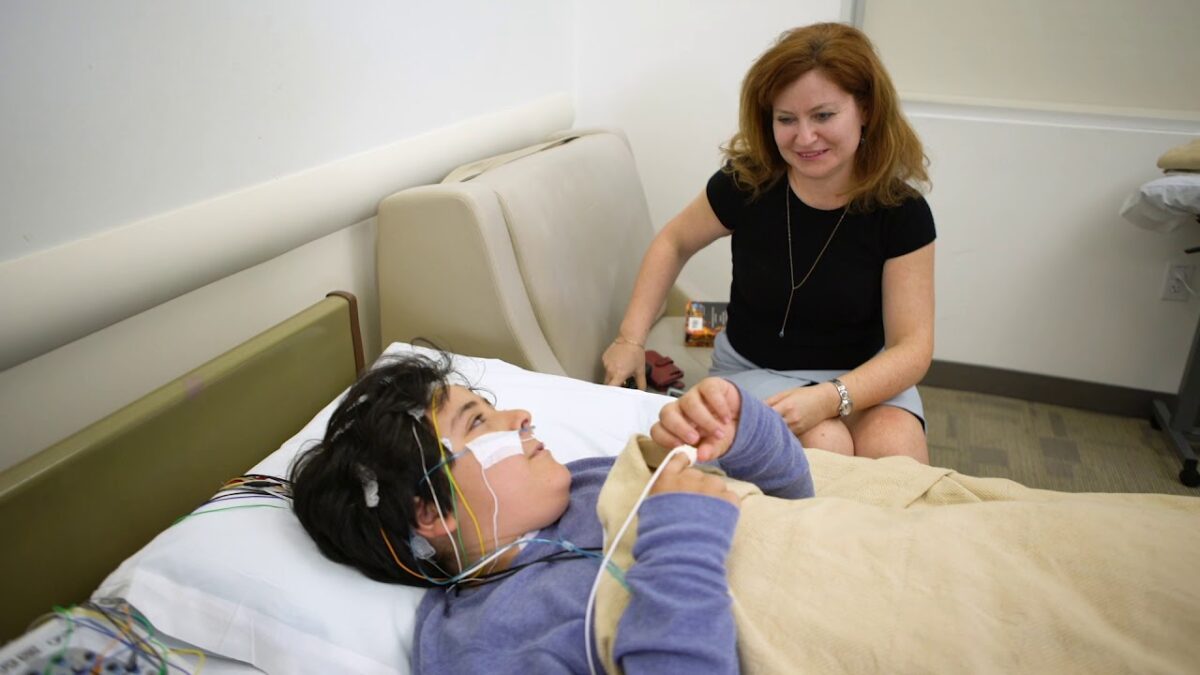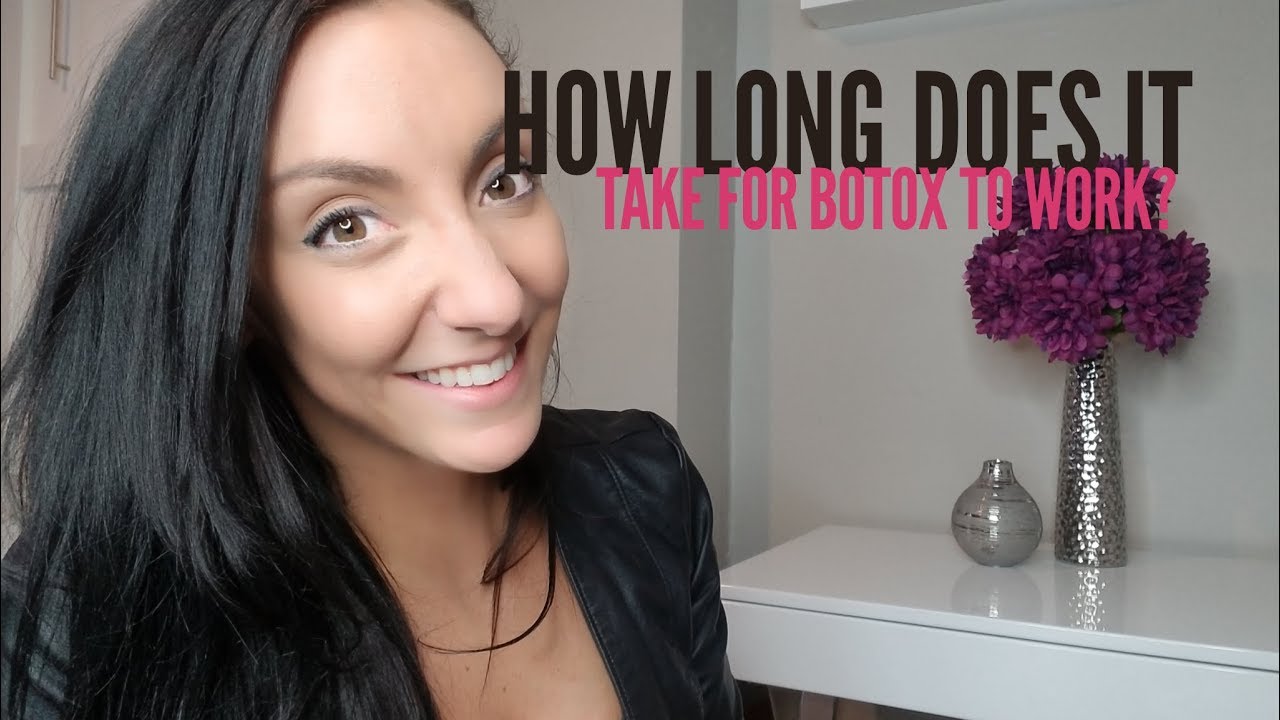How long does Botox take to work?
Botox is an effective treatment for wrinkles and fine lines, but it takes time to work. When it’s injected into specific muscles, the chemical relaxes them to reduce their activity. This decreases the appearance of fine lines and wrinkles, making your skin look smoother.
How long it takes to work varies from person to person, but the effects usually start to show within a few days of treatment. The results are most noticeable in the crow’s feet around your eyes, fine forehead lines, and wrinkles between your eyebrows.
It takes about a week for the treatment to fully take effect and start to soften your lines. It’s important to follow your doctor’s instructions for aftercare, which include not rubbing the treatment area or exercising for 12 hours following injections.
After your first treatment, you may feel a slight tightness or heaviness in the treated areas. This is normal because the chemical has been injected into your muscle tissue, and will subside within a few weeks.
If you want to see maximum effects from your Botox injection, doctor C. Rokhsar might recommend a second treatment about a month after the first. This can help your muscles to relax even more.
The results of a second Botox treatment last longer than the first one because your muscles have been trained to contract less. After about three to four months, your muscles will be ready for another Botox treatment to restore their youthful appearance.
When you’re ready for your next treatment, you should come back to the office about a week or so before your scheduled appointment. Your physician will ask about any medications you’re taking, including any blood thinners or pain relievers. You should also avoid alcohol at least a week before your injection, which can increase the risk of bruising.
Your doctor will decide the dosage and dilution for your treatment, which will depend on the size of your targeted muscles and the severity of your lines. For example, a patient with deep or etched forehead lines might require more Botox to achieve optimal results.
How long does Botox last?
Botox is a popular anti-aging treatment that is used to treat wrinkles, frown lines, and crow’s feet. It can also be used to treat migraines and reduce neck spams.
It works by temporarily paralyzing the facial muscles, which stops the nerves from sending signals to make them contract and create fine lines and wrinkles. The effects of Botox are temporary and last three to four months, but they can last longer if you get regular injections.
Before you go in for Botox, it’s important to tell your doctor if you have any medical conditions, allergies, or other health issues that may interfere with the procedure. For instance, if you have an active cold sore or fever blister, canker sore, shingles, hepatitis B infection, or are taking certain medications, you will need to postpone the treatment.
Once you’re in the doctor’s office, a number of tiny injections will be administered to the area that needs to be treated. Depending on the location, you may experience mild bruising and pain after the treatment.
To minimize bruising and swelling, it’s important not to touch or rub the injection site. This can cause the toxin to spread, causing more bruising and pain in the area.
You should also avoid alcohol and massages for the first 24 hours after receiving Botox. These activities can disrupt the injected area and prevent the toxins from spreading to the surrounding muscles.
The length of time your Botox results last will depend on a variety of factors, including your body’s metabolism rate and frequency of injections. Those who have a faster metabolism (such as athletes or people who are very fit) tend to have shorter results.
However, even those who have a slow metabolism can see positive effects from Botox injections. Many patients will require several treatments to fully achieve their desired result.
How long you get the most out of your Botox injections depends on a few different things, including your lifestyle and whether or not you are receiving maintenance treatments to keep your results fresh. Generally speaking, you’ll need to receive maintenance injections every two or three months to keep your results looking their best.
Is Botox cause side effects?
Botox is one of the most popular nonsurgical cosmetic treatments, and its effectiveness and safety are well-established. However, it also has a number of side effects that can occur, both short- and long-term. Some of these side effects may be minor, and others can be more severe.
These side effects can include headache, bruising, and drooping eyelids. Those who are particularly susceptible to these symptoms should be cautious and talk with their doctor about their health status before receiving Botox injections.
Drooping eyelids are the most common and most serious side effect from Botox treatment, although they usually only last a few weeks or so. These symptoms are caused by the drooping of muscles that support the upper eyelid, and can be more pronounced if you have had a previous Botox treatment in the same area.
Other Botox side effects, such as bruising, typically dissipate within 2 to 3 days of the injection. It can take longer if you have diabetes, a heart condition, or blood thinners like aspirin.
Another common side effect of Botox is numbness in the treated area. This occurs when Botox blocks the neurotransmitter acetylcholine, which signals the muscle to contract. This can cause numbness in the treatment area, and it usually lasts for several hours or longer.
Headaches can also be a side effect of Botox, but they tend to disappear on their own within 24-48 hours of the injection. If you experience a headache, it’s best to seek medical attention.
Some people develop an allergic reaction to Botox. Symptoms of an allergic reaction can include itching, hives, wheezing, or difficulty breathing. If you have an allergy to Botox, call your doctor right away.
A bacterial infection can also occur after receiving Botox injections. This is most common when untrained cosmetic providers administer the shots and don’t follow standard preparatory procedures.
The toxin contained in Botox can spread to other parts of your body beyond where it was injected. This can lead to serious life-threatening side effects, including breathing problems, drooping eyelids, and trouble seeing.
Other side effects that can occur from using Botox are muscle weakness, and nerve or muscle-related problems. These are more likely to happen if you have conditions such as myasthenia gravis, a condition that causes weakness in the arms and legs. It’s also more likely if you have a history of heart problems.
How long does Botox work?
When you have Botox injected into your muscles, it works by blocking the neurotransmitter acetylcholine. This prevents muscle cells from contracting, reducing the appearance of fine lines and wrinkles.
In general, you should see a noticeable difference between 24 and 72 hours after your treatment. However, it may take up to five days for full results to appear. This is due to the time it takes for the toxin to reach the nerves that control your muscles.
The time it takes for your injections to work also depends on where you receive them and the depth of your wrinkles. The deeper the wrinkles, the longer it will take for Botox to reduce their appearance.
Your provider can help you determine the right amount of Botox to have injected, depending on the area of your face being treated. They can also choose to use a different type of toxin for different areas, such as a botulinum toxin type A (Botox®) or a botulinum toxin Type D (Xeomin®).
Once injected into your muscles, the toxin will stop the muscles from contracting, reducing the appearance of facial wrinkles and lines. The toxin also makes the skin look smoother and more even in tone.
For best results, you should wait a full 14 days after your treatment to see the final effects of the Botox. You should also avoid sun exposure, as it can make the toxin break down more quickly and decrease its effectiveness.
The treatment itself is a simple and painless procedure, which lasts around 15 minutes. Your healthcare provider will use a thin needle to inject the toxin into your muscles underneath your skin. You’ll probably feel a pinch or slight pressure during the procedure, but most patients don’t experience any pain at all.
After your treatment, you can return to your normal activities. However, you should not lie down for at least four hours because this can cause pressure on your treated areas and accidental rubbing or migration of the toxin.
As long as you follow these guidelines, Botox is safe for most people and can be used to treat both cosmetic and medical concerns. Some people have allergic reactions to the toxin, but they are rare.

